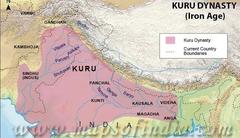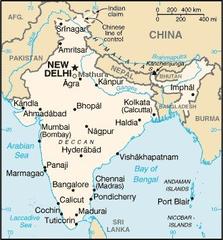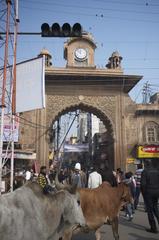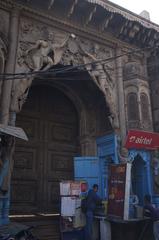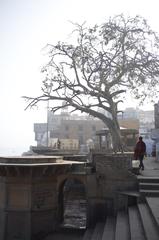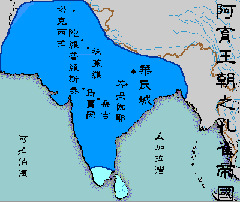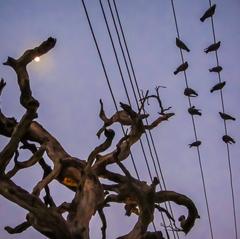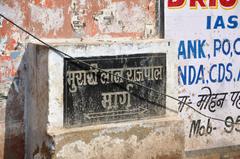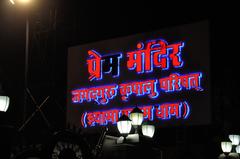
Comprehensive Guide to Visiting Mathura, Mathura District, India
Date: 13/08/2024
Introduction
Imagine walking through a city where every stone whispers ancient legends and every corner bursts with vibrant colors of devotion. Welcome to Mathura, the birthplace of Lord Krishna and an enchanting blend of history, mythology, and spirituality. Nestled along the sacred Yamuna River, Mathura isn’t just a destination; it’s an experience that transcends time. This ancient city has witnessed the rise and fall of empires, the birth of deities, and the ebb and flow of diverse cultures. As you stroll through its bustling streets, picture the sounds of Krishna’s flute, the laughter of his playful antics, and the whispers of legends that permeate every nook and cranny. Mathura’s rich tapestry of history and spirituality makes it a must-visit for pilgrims, history buffs, and adventurers alike. So, are you ready to dive into the divine tales and vibrant festivals that make Mathura a city like no other? (Britannica) (Cultural India) (Misfit Wanderers)
Table of Contents
- History of Mathura
- Ancient Origins and Mythological Significance
- Early Historical Period
- Influence of Indo-Greeks and Indo-Scythians
- Kushan Dynasty and the Flourishing of Buddhism and Jainism
- Medieval Period and Islamic Invasions
- British Colonial Period
- Modern Era and Cultural Significance
- Key Historical Sites in Mathura
- Significance of Mathura
- Must-Visit Attractions
History of Mathura: A Journey Through Time and Tales
Ancient Origins and Mythological Significance
Mathura’s story begins in the 6th century BCE, but its roots dig even deeper into the fertile soil of Hindu mythology. This is the birthplace of Lord Krishna, the mischievous, flute-playing deity who danced his way into the hearts of millions. The ancient Indian epic, the Ramayana, tells us how Prince Shatrughna conquered the demon Lavanasura, transforming Madhuvan into the enchanting Mathura we know today.
Early Historical Period
Fast forward a few centuries, and we find Mathura evolving from a humble village to a bustling city during the Vedic age. The city, strategically located, became an economic powerhouse. From the Painted Grey Ware culture to the Northern Black Polished Ware culture, Mathura’s archaeological layers reveal a tapestry of human progress. As the capital of the Surasena mahajanapada, Mathura witnessed the grandeur of the Maurya and Shunga empires.
Influence of Indo-Greeks and Indo-Scythians
Between 180 BCE and 100 BCE, Mathura welcomed the Indo-Greeks, who brought with them a splash of Hellenistic art and architecture. The Indo-Scythians followed, adding their own strokes to Mathura’s ever-evolving canvas.
Kushan Dynasty and the Flourishing of Buddhism and Jainism
Under the Kushan dynasty, Mathura truly flourished. Emperor Kanishka’s reign marked a time when the city became a beacon of Buddhism and Jainism. Mathura was not just a city; it was a spiritual haven.
Medieval Period and Islamic Invasions
The medieval period brought turbulent times to Mathura. Mahmud of Ghazni’s forces stormed the city in 1017-18 CE, leaving a trail of destruction. The Mughal emperor Aurangzeb’s invasions in the 15th and 18th centuries echoed with the sounds of temples falling and mosques rising. Yet, Mathura endured, its spirit unbroken.
British Colonial Period
In 1804, Mathura entered a new chapter under British rule. Colonial officers, intrigued by the city’s ancient charm, worked to restore its temples and promote its heritage. Modern educational institutions sprang up, and infrastructural development paved the way for a new era.
Modern Era and Cultural Significance
Today, Mathura stands as a vibrant testament to its rich history and cultural significance. The city pulses with life, attracting millions of pilgrims and tourists. Mathura’s spiritual and cultural fervor resonates in every ghat, every temple, and every soul that steps into this timeless city.
Key Historical Sites in Mathura
Shri Krishna Janmabhoomi Temple
Believed to be the exact spot where Lord Krishna was born, the Shri Krishna Janmabhoomi Temple draws thousands of devotees, especially during Janmashtami.
Dwarkadhish Temple
Built in 1814, the Dwarkadhish Temple is a masterpiece of intricate carvings and vibrant paintings. Dedicated to Lord Krishna, this temple comes alive during Holi and Janmashtami.
Kusum Sarovar
Kusum Sarovar is a serene water tank near Mathura, steeped in the legends of Radha and Krishna. It’s a perfect spot for introspection and meditation.
Govardhan Hill
According to legend, Krishna lifted this hill on his little finger to protect villagers from torrential rains. Feel the spiritual energy as you trek up the hill, taking in the scenic views and the sense of divine protection.
Local Secrets and Hidden Gems
Beyond the well-trodden paths lie Mathura’s hidden treasures. Visit the Chaurasi Khamba, an ancient structure with 84 pillars, each telling a story of its own. Explore the narrow lanes of the old city, where local artisans create magic with their hands, crafting intricate jewelry and traditional attire.
Visitor Tips
Best Time to Visit
Mathura’s subtropical climate means hot summers and cool winters. The best time to visit is during the winter months (October to March), when the weather is pleasant. Imagine the city during Janmashtami and Holi, bursting with colors, music, and joy.
Travel and Accommodation
Mathura is well-connected with efficient transport links. From budget hotels to luxury resorts, the city offers a range of accommodation options. Book in advance, especially during festivals, to ensure a hassle-free stay.
Local Cuisine
Mathura’s cuisine is a delightful journey for your taste buds. Savor the crispy Kachori, the sweet Maal Pua, the spicy Bedai Puri, and the iconic Peda from Brijwasi Sweets. The street food scene is vibrant and offers a variety of snacks and sweets that are sure to leave you craving for more.
Cultural Context and Etiquette
When visiting Mathura, it’s essential to respect local customs and traditions. Dress modestly, especially when visiting temples. Remove your shoes before entering religious sites, and be mindful of your behavior in sacred spaces. A little respect goes a long way in making your visit more enriching.
Call to Action
Ready to uncover the secrets of Mathura? Download Audiala, your ultimate tour guide app, to enhance your exploration. With beautifully crafted audio guides, Audiala offers expert insights and hidden gems, making it the perfect companion for curious travelers. Don’t just visit Mathura; immerse yourself in its stories and legends. Download Audiala now and let the journey begin!
Significance of Mathura
Religious Importance
Mathura is one of the seven sacred cities (Sapta Puri) in Hinduism, revered as the birthplace of Lord Krishna, a major deity in the Hindu pantheon. The most significant site in Mathura is the Shri Krishna Janmabhoomi, believed to be the exact birthplace of Krishna. This site attracts millions of pilgrims annually, especially during Janmashtami, the festival celebrating Krishna’s birth (Britannica).
Cultural Heritage
Mathura’s cultural heritage is rich and diverse, influenced by various dynasties and cultures over millennia. The city has been a center for Brahmanism, Buddhism, and Jainism, each leaving a lasting impact on its cultural landscape. The Mathura School of Art, which flourished during the Kushan period, is renowned for its distinctive style of sculpture, characterized by intricate detailing and expressive forms (Cultural India).
Architectural Marvels
Mathura is home to numerous temples, ghats, and other architectural marvels that reflect its historical and religious significance. The Dwarkadhish Temple, dedicated to Lord Krishna, is one of the most prominent temples in the city. Another notable site is the Shahi Eidgah Mosque, built by the Mughal Emperor Aurangzeb in the 17th century. This mosque stands adjacent to the Krishna Janmabhoomi, symbolizing the city’s complex history of religious coexistence and conflict (Britannica).
Pilgrimage and Festivals
Mathura is a major pilgrimage center, attracting devotees from all over the world. The city is particularly vibrant during festivals such as Holi and Janmashtami. Holi, the festival of colors, is celebrated with great enthusiasm in Mathura, especially in the nearby town of Barsana, where the unique Lathmar Holi takes place. During Janmashtami, the entire city is adorned with decorations, and various religious activities, including processions and reenactments of Krishna’s life, are held (Misfit Wanderers).
Economic Significance
Historically, Mathura was an important economic hub due to its strategic location at the crossroads of major trade routes. This facilitated the exchange of goods and cultures, contributing to the city’s prosperity and cultural richness. Today, Mathura continues to be an important agricultural trade center, with industries such as textiles and handicrafts playing a significant role in its economy (Cultural India).
Educational and Cultural Institutions
Mathura is home to several educational and cultural institutions that preserve and promote its rich heritage. The Government Museum, Mathura, established in 1874, houses an extensive collection of ancient relics, sculptures, coins, and paintings. This museum is a treasure trove for historians and art enthusiasts, offering insights into the city’s historical and cultural evolution (Britannica).
Surrounding Sacred Sites
The significance of Mathura extends beyond its city limits to the surrounding region of Braj, which includes several other sacred sites associated with Krishna’s life. Vrindavan, located just 11 kilometers from Mathura, is another major pilgrimage destination. It is believed to be the place where Krishna spent his childhood, and it is home to numerous temples, including the ISKCON Temple and the upcoming Vrindavan Chandrodaya Mandir, which is set to be the tallest temple in the world (Misfit Wanderers).
Local Traditions and Art Forms
Mathura is also known for its unique local traditions and art forms. The Sanjhee art form, which involves decorating the ground with colorful patterns made from flowers, is a significant cultural tradition in Mathura. Another important cultural expression is the Raaslila, a traditional dance drama that depicts the life and exploits of Krishna. These cultural practices not only enrich the local heritage but also attract tourists and art lovers from around the world (Mathura District Official Website).
Modern-Day Relevance
In contemporary times, Mathura continues to hold immense religious and cultural significance. The city has been chosen as one of the heritage cities under the Heritage City Development and Augmentation Yojana (HRIDAY) scheme of the Government of India. This initiative aims to preserve and rejuvenate the cultural heritage of Mathura, ensuring that its historical and religious significance is maintained for future generations (Travel World Planet).
Practical Travel Tips
For those planning to visit Mathura, it is advisable to plan the trip around major festivals like Holi and Janmashtami to experience the city’s vibrant culture. However, these are also peak tourist seasons, so be prepared for large crowds. The best time to visit Mathura is from October to March, when the weather is pleasant. Accommodation options range from budget hotels to luxury resorts, with many pilgrims opting to stay in ashrams or guest houses in Vrindavan (Misfit Wanderers).
Conclusion
Mathura’s significance is multifaceted, encompassing religious, cultural, historical, and economic dimensions. Its rich heritage, vibrant festivals, and architectural marvels make it a must-visit destination for anyone interested in exploring the spiritual and cultural heart of India. Whether you are a pilgrim, a history buff, or a cultural enthusiast, Mathura offers a unique and enriching experience that is sure to leave a lasting impression.
Call to Action
Ready to unravel Mathura’s secrets? Download Audiala, your perfect travel companion, offering beautifully crafted audio guides packed with local insights and hidden gems. Don’t miss out—unlock Mathura’s stories with Audiala!
Must-Visit Attractions in Mathura
Welcome to Mathura, the birthplace of Lord Krishna and a city brimming with divine tales, vibrant festivals, and a rich tapestry of cultural heritage. Whether you’re a pilgrim, a history buff, or just someone looking for an adventure, Mathura promises to enchant you. Ready for a journey through time and spirituality? Let’s dive in!
Shri Krishna Janmabhoomi Temple
Imagine standing at the very spot where the mischievous Lord Krishna was born! The Shri Krishna Janmabhoomi Temple is not just a temple but a portal to ancient legends. The Garbha Griha, a small prison cell, echoes with the divine story of Krishna’s birth. Visit during Janmashtami, and you’ll be swept up in a wave of joy, devotion, and a sea of colors. Pro tip: Keep an eye out for the local sweet shops near the temple – their pedas are to die for! (Travel Setu)
Dwarkadhish Temple
Step into the royal court of Lord Krishna at the Dwarkadhish Temple. Built in 1814, this temple is a marvel of intricate carvings and grand architecture. Holi and Janmashtami here are not just festivals; they are a whirlwind of colors, flowers, and lights. It’s a place where spirituality meets celebration. And oh, the serene atmosphere? Perfect for a moment of reflection amidst the hustle and bustle. (Travel Setu)
Vishram Ghat
Picture this: The sun setting over the Yamuna River, the air filled with the scent of incense, and the sound of bells ringing. Vishram Ghat is where Lord Krishna is believed to have rested after his epic battle with Kansa. The evening aarti here, with hundreds of floating diyas, is sheer magic. Don’t forget to join the parikrama – it’s a spiritual walk like no other. (Travel Setu)
Govardhan Hill
Ever heard of a boy lifting a hill on his little finger? Welcome to Govardhan Hill, the site of one of Krishna’s most famous feats. The 21-kilometer Govardhan Parikrama is not just a walk but a journey through legends, temples, and sacred ponds. It’s a spiritually enriching experience that will leave you in awe. (Travel Setu)
Prem Mandir
A temple that looks like it’s straight out of a fairy tale. Prem Mandir, inaugurated in 2012, is a blend of tradition and modernity. Dedicated to Radha Krishna and Sita Ram, its marble carvings and beautiful gardens are a visual treat. The evening light and sound show? Simply mesmerizing! This is more than a temple; it’s a center for spiritual education and cultural activities. (Travel Setu)
Birla Mandir
Also known as Gita Mandir, this temple is a serene retreat built by the Birla family. The walls, inscribed with verses from the Bhagavad Gita, radiate wisdom and tranquility. The annual Gita Jayanti festival is a major highlight. And the gardens? Perfect for a peaceful stroll. (Travel Setu)
Kusum Sarovar
Kusum Sarovar is a hidden gem near Govardhan Hill. Legend has it that Radha came here to collect flowers. The serene waters, surrounded by beautiful sandstone structures, make it a perfect spot for relaxation. The evening aarti here, with the reflections in the water, is a sight to behold. (Travel Setu)
Radha Kund
One of the most sacred ponds in Mathura, Radha Kund is a tribute to the divine love of Radha and Krishna. Take a dip during Ahoi Ashtami, and you’re believed to be cleansed of all sins. The surrounding temples and ashrams add to its vibrant spiritual atmosphere. (Travel Setu)
Mathura Museum
For all you history buffs, the Mathura Museum is a treasure trove. Established in 1874, it houses artifacts from the Gupta and Kushan periods. Terracotta sculptures, coins, pottery – it’s a journey through India’s rich cultural heritage. A must-visit for anyone keen on ancient art. (Travel Setu)
Govind Deo Temple
Built in the 16th century, the Govind Deo Temple is an architectural marvel. Its red sandstone structure and intricate carvings are a testament to the craftsmanship of the era. The blend of Hindu and Mughal styles is unique. And during Janmashtami? The celebrations are grand and unforgettable. (Travel Setu)
Rangji Temple
Dedicated to Lord Ranganatha, the Rangji Temple stands out with its Dravidian-style architecture. The tall gopuram and intricate carvings are a visual treat. The annual Brahmotsavam festival attracts thousands of devotees. The temple’s unique architecture and spiritual ambiance make it a must-visit. (Travel Setu)
Jama Masjid
A testament to Mathura’s rich cultural diversity, the Jama Masjid was built in 1661. Its impressive architecture, with four minarets and intricate carvings, is a sight to behold. The peaceful courtyard is perfect for reflection. It’s a slice of history that’s not to be missed. (Travel Setu)
Kans Qila
Named after the tyrant king Kansa, Kans Qila offers a panoramic view of the Yamuna River. Though in ruins, its historical significance and association with Krishna’s legends make it fascinating. The blend of Hindu and Mughal architecture adds to its charm. (Travel Setu)
Local Secrets and Hidden Gems
While the main attractions are a must, Mathura has its share of hidden gems. Ever heard of the local custom of ‘Lathmar Holi’ in Barsana? It’s a playful and colorful festival where women playfully hit men with sticks. Don’t miss the chance to try the local delicacy, ‘Pedas,’ a sweet treat that’s synonymous with Mathura.
These attractions in Mathura offer a rich tapestry of spiritual, historical, and cultural experiences, making the city a must-visit destination for travelers seeking to explore the heart of India’s religious heritage. So, pack your bags, download the Audiala app for guided tours, and get ready to embark on a journey through the divine city of Mathura!
Conclusion
Mathura is more than just an ancient city; it’s a living testament to India’s rich cultural, spiritual, and historical heritage. From the divine tales of Lord Krishna to the architectural marvels and vibrant festivals, Mathura offers a unique blend of experiences that cater to every kind of traveler. The city’s historical significance, coupled with its modern-day relevance, makes it a fascinating destination to explore. Whether you’re captivated by the intricate carvings of the Dwarkadhish Temple, the serene atmosphere of Kusum Sarovar, or the spiritual fervor of the Govardhan Parikrama, Mathura promises to leave an indelible mark on your soul. Ready to uncover the secrets of Mathura? Download Audiala, your ultimate tour guide app, to enhance your exploration. With beautifully crafted audio guides, Audiala offers expert insights and hidden gems, making it the perfect companion for curious travelers. Don’t just visit Mathura; immerse yourself in its stories and legends. Download Audiala now and let the journey begin! (Britannica) (Cultural India)
References
- Mathura, 2024, Britannica source url
- Mathura: The Cultural Capital of India, 2024, Cultural India source url
- Mathura: A Divine Journey, 2024, Misfit Wanderers source url
- Must-Visit Attractions in Mathura, 2024, Travel Setu source url


